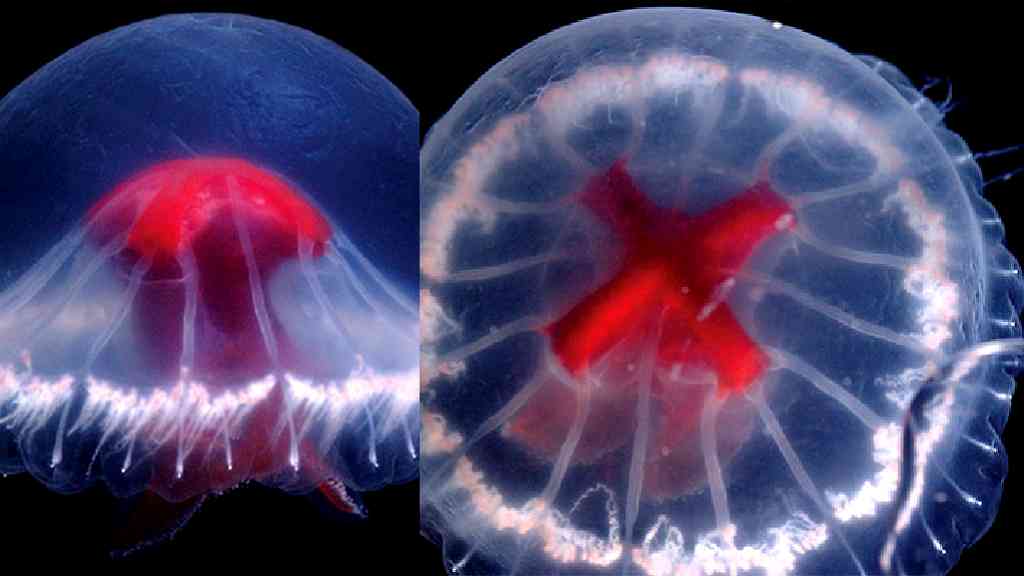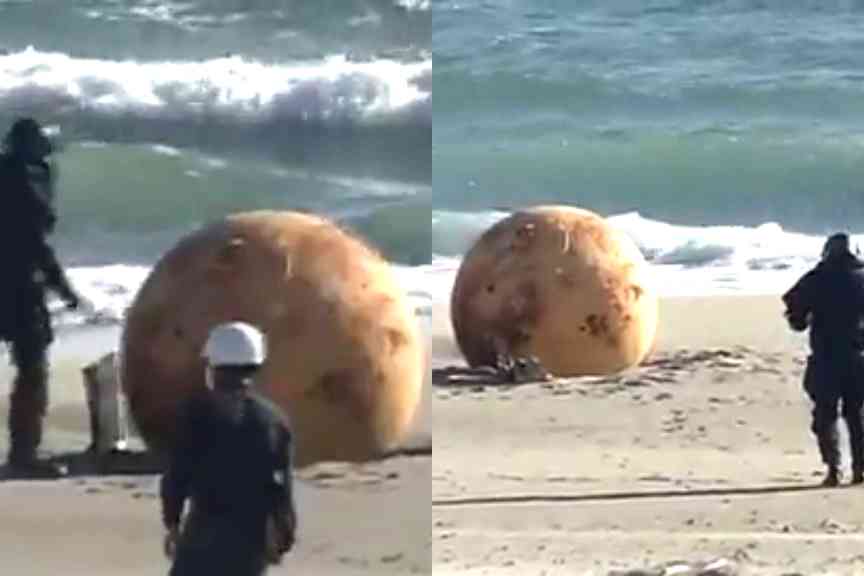Scientists describe new jellyfish species with red ‘cross’, 240 tentacles



By Ryan General
February 6, 2024
A team of international scientists has published a description of a novel jellyfish species with a unique red stomach resembling the Cross of St. George.
About the jellyfish: The St. George’s Cross Medusa, named after the red cross emblem of England, has been identified as Santjordia pagesi (refers to Saint George in Catalan), a newly described species of medusa. Compared to other medusa species, the St. George’s Cross Medusa is relatively smaller, measuring approximately four inches (10.16 centimeters) wide and three inches (7.62 centimeters) long. In addition to having 240 tentacles, its most striking attribute is the red “Cross” in its stomach, which appears prominent when viewed from above.
How it was found: The scientists described a specimen captured in 2002 by a remotely operated vehicle (ROV) at a depth of 812 meters (2,664 feet) in the Sumisu Caldera, a hydrothermally active deep-sea volcanic structure situated in Japan’s Ogasawara Islands. This inhospitable environment, accessible only through specialized equipment such as ROVs, makes the discovery of S. pagesi very challenging. No jellyfish of the same species was found until another ROV spotted one in 2020 but was unable to capture it.
About the research team: The research team, led by André Morandini, a professor of zoology at the University of São Paulo’s Institute of Biosciences, published their findings in the journal Zootaxa in November 2023. Other researchers involved are from the Japan Agency for Marine-Earth Science and Technology (JAMSTEC) and the Okinawa Institute of Science and Technology (OIST).
Potential biological significance: According to the researchers, the classification of S. pagesi within a new subfamily, Santjordiinae, hints at evolutionary divergence and potential novel adaptations. Its distinct characteristics also raise questions about its venomous arsenal, which may be unlike those of other known jellyfish species.
“We opted to publish the description and call attention to the species that are present at the site, which has a substrate rich in minerals and the potential to be commercially developed,” Morandini said in a press release. “Unfortunately, research can’t be conducted in such places without partners who have interests of this kind.”
Share this Article
Share this Article





